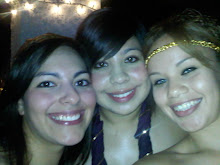
Throughout the book she finds herself questioned by other characters (the caterpillar and the pigeon) about her identity several times to conclusion that she doesn’t know. “Who in the world am I? Ah, that’s the great puzzle” (466)! Through the encounters with different characters in the book, she is intended to deal with one of her traits that aren’t so pleasant and while she attempts to deal with most of them her impatience shines through as she snaps or walks away from most of the characters.

For example, after growing several feet high she cries and makes a big puddle which she later must swim in with tons of other little creatures. Alice asks a mouse for help but can find no connection to it except for her own selfish needs and therefore begin to tell stories about her cat and the neighbor’s dog that enjoy catching mice, insulting the mouse who is trying to be helpful. “Alice demonstrates very quickly that she is unable to imagine what it is like to live in the world of the mouse, or indeed, any world but her own” (538). While the mouse tries to be patient, Alice makes hard by disregarding the feelings of the mouse upon hearing what she considers to be happy tales. “But you’re so easily offended, you know!” (477) Never thinking that she is wrong for having shared her story, she places the blame on the mouse who’s done nothing but befriended her. After getting out of the water they participate in a Caucus Race with the other creatures, when the Dodo (the one who came up with the game) was asked who the winner was he was unable to pick a winner and decided they all won. This wasn’t only because of the lack of rules, I think it was him not wanting to hurt the feelings of the creatures around him by saying that they had lost. This first demonstration of concern for others didn’t really seem to be important to Alice who thought of everything as a big joke. In the next section, her rude tendencies shine through in her treatment to the rabbit and his friends. Whiles inside a house too small for her recent growth spurt she acts scared of being confronted by the much smaller characters. However, this fear only makes her think of ways to hurt them and preventing them from gaining any control over the situation she already has no control over. The horrible human qualities of Alice shine through as she chooses to harm defenseless animals because of her selfish needs to maintain whatever little power she still has and to ensure no connection between her and the creatures can be made. In another section where Alice is talking to a pigeon, again she tries to maintain her distance from the creatures by denying any similarities to them even when told that like snakes she eats eggs too. She can’t have this and ensures that the differences between the two are known.
There are a few characters that truly impact Alice and allow her to put herself in their shoes. After being stubborn and impatient with a footman and entering the Duchess house without permission she asks questions about the grinning Cheshire cat. “‘You don’t know much,’ said the Duchess; ‘and that’s a fact’” (483). This reflects my previous interpretation of Alice’s character as ignorant and especially when it comes to other animals. The Duchess pointing out Alice’s fault began the real change for Alice as she slowly began to really consider her actions and those of the people around her.Later in the book it is the Cheshire cat that she truly first shows empathy when she tries to ensure that its head is not cut off.

After her conversation with the Duchess she is handed over the pig to nurse it while the Duchess gets ready. She looks at the pig and thinks that the possibility that the pig will die in the near future is realistic and begins to feel compassion for its innocence and foolishness that has gotten it into that position. She then begins to question her role in the pigs future death. “Would it be murder to leave it behind” (485)? After never looking at situation from others perspectives, her journey has made her finally think of others and the role she plays that can influence the outcomes. She then heads to the Queens place and again puts herself in the shoes of others. “Carroll’s part by turning these “human” characters into personified playing cards, inherently small and thin, suggesting that their self serving, self indulgent natures make them shallow excuses for human beings” (539). In realizing that she can influence the situation at hand, she finds empathy for the cards when the Queen orders for their heads to be chopped off and defends them. Finding the Queen childish and annoying and seeing a connection to others around her more than she ever has in the past, Alice continues her growth of character and her journey to discovering who she is.


No comments:
Post a Comment